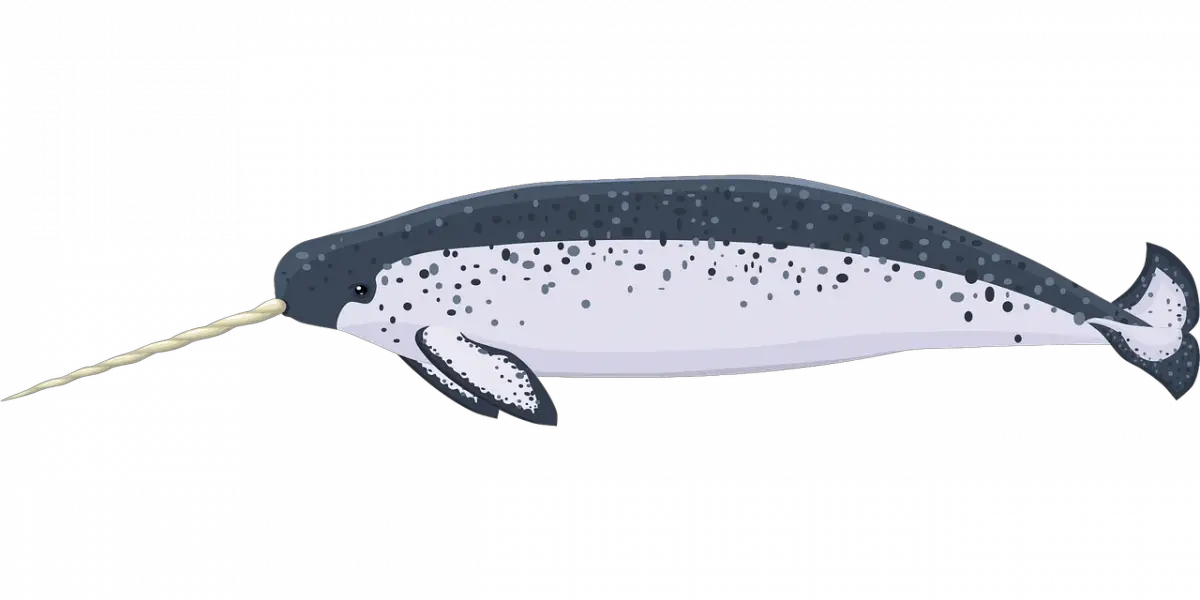Narwhals are one of the Arctic Ocean’s most enigmatic creatures, and for good reason: they’re fantastic. Even though few people have seen yet a narwhal, they are well-known for their distinctive tusk, which has earned them the most beautiful of nicknames: “unicorn of the sea.”
And, let’s face it, who doesn’t adore a unicorn of some sort? But there was something else I needed to know. To begin with, the tusk of a narwhal is an enlarged spiralizer tooth, and it’s one of just two teeth they’ll ever have.
Indeed, if you had been lucky enough to see a narwhal in the wild, you might not recognize it as one at all, as most of them end up losing their tusks over time. It’s an inside-out tooth.
On the outside, the narwhal tusk is extremely sensitive, having up to 10 million nerve ends on each one. Researchers discovered significant variations in heart rate when varying high-salt and freshwater solutions were applied to the tusk’s exterior surface in 2014.
I envision it to be akin to the sensation you get when you put exceptionally cold frozen yogurt on a sensitive region on your tooth—but much worse (thus its enigmatic and elusive reputation!).
While there are a few other species with projecting teeth (such as walruses and elephants), the tusk of the narwhal is still unique. SO, narwhals tusk is made of the ivory and it grows right through the upper line
Do Narwhal Tusks Fall Off?
The tusk is thought to be a male sex trait by scientists. About 15% of all female narwhals develop a tusk. Males’ tusks are smaller and do not develop as noticeable as females’ tusks. The female tusks constantly fall off and the males’ tusks don’t fall often.
Although many female narwhals do not produce tusks, removing bone portions from the upper line of the jaw of a female narwhal reveals two little tusks that haven’t broken the surface. Scientists analyzed a few female narwhal skulls in their collection. The function of these tiny, unrequited tusks is unknown.
Do Narwhal Tusks Grow Back?
Yes, the same way elephant or walrus tusks do. Their tusk is actually a long protruding canine tooth and as you know teeth are made of bone and bones grow back and heal if they are fractured or broken.
Think about it this way when your tooth falls out and you put it under your pillow to get money from the tooth an adult tooth underneath will grow in replacing the tooth you lost.
So their Tusks can grow back but it takes a long time to grow the tusk back to its position and size. Most of the males have the tusk and only 15% of females have been recorded to have the tusk.
So, it is the same as the tooth and tales in lizards. Once it falls off, it grows back. It also has small pores on the tusk and primarily it is believed to be a guiding feature for the Narwhals.
How Long Can a Narwhal Tusk Grow?
The spiraling tusk protrudes from the head and it can reach a length of up to 10 feet. It is most usually found in males. Some narwhals have two tusks, whereas others don’t have any.
It can be seen that for most people it can be very large but according to the size of the Narwhals, it is fine. It is the left teeth that are expanded most of the time from the upper line of their jaw.
Are Penguins a Prey for Seals?
Seals and penguins interactions are a common sight in the Antarctic region. While penguins might be perceived as potential prey, the reality is quite different. Seals mainly feed on fish, squid, and krill, rather than hunting penguins. However, there have been instances where seals have targeted young or injured penguins. Overall, their interactions are more of a coexistence rather than a predator-prey relationship.
Can a Narwhal Live Without Its Tusk?
To some extent, the tusks inspire fantasies, since several theories for their function have been postulated, including shattering ice, sword fighting, spearing sources of food, and excavating in the seabed. In reality, no one has ever seen any of these actions.
One thing is clear: the tusk cannot play a key purpose in narwhal survival because females without tusks live longer than the males and exist in the same places as males while also being involved in breeding and calf care.







